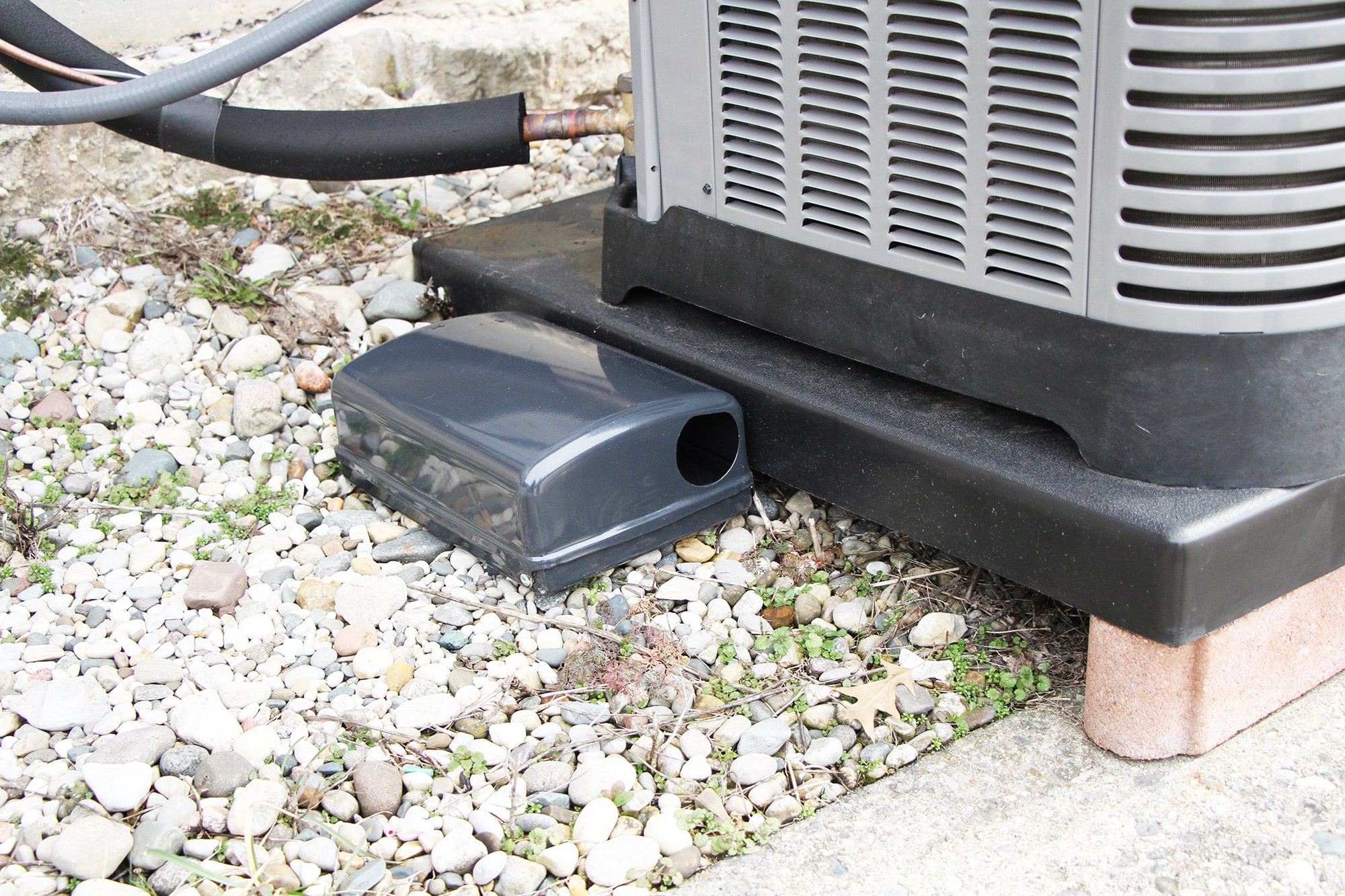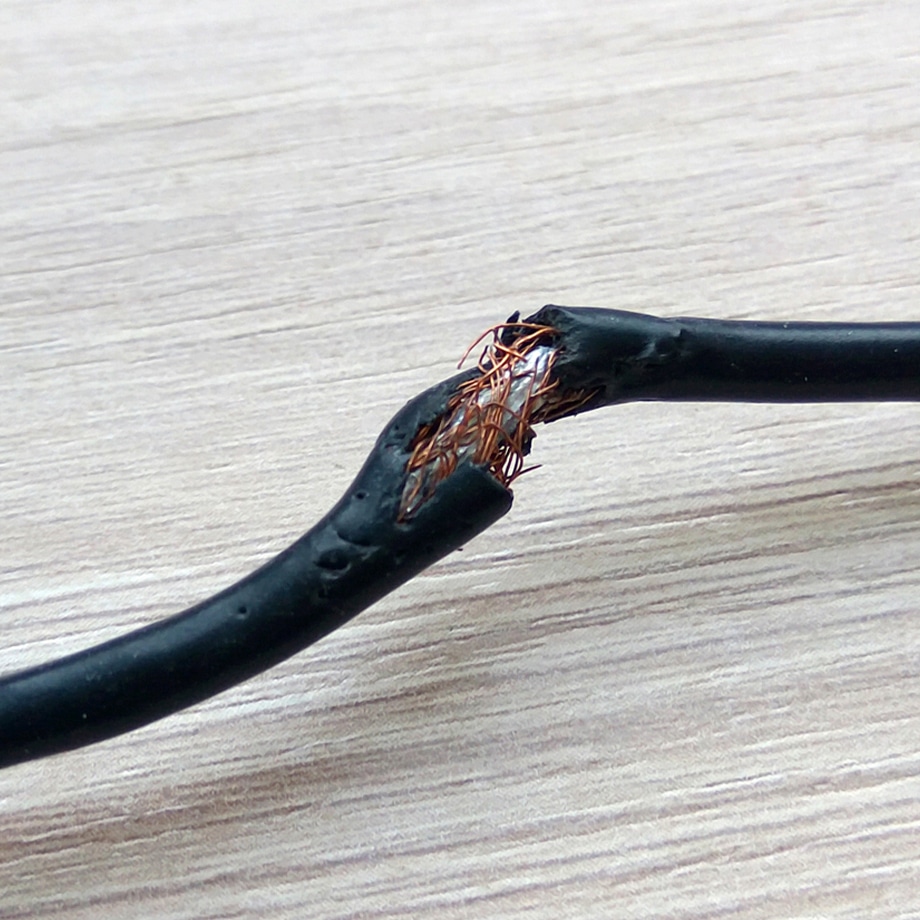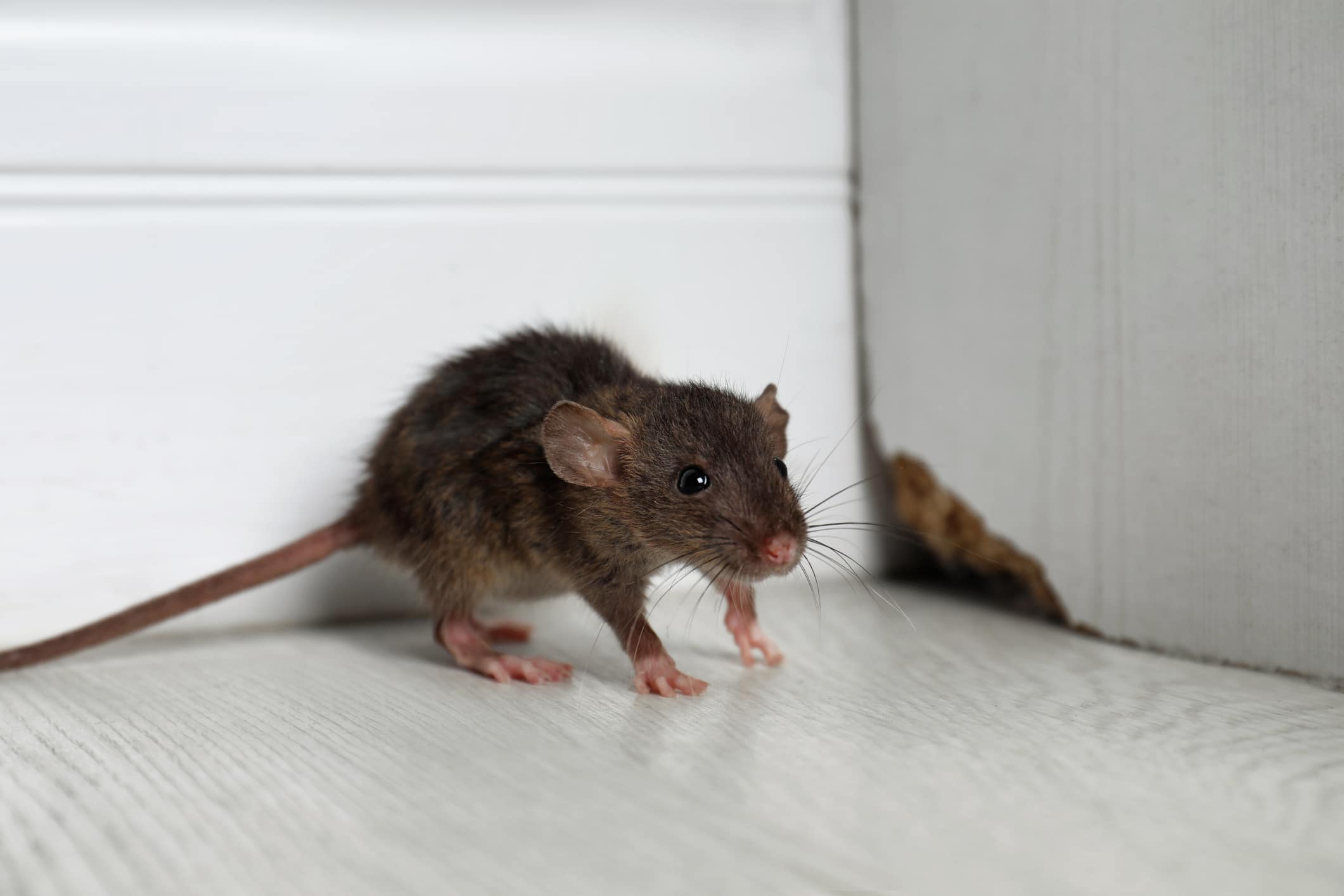
Best House Mice Removal Company Near Ann Arbor, MI
From Main Street Shops to Neighborhood Homes, We Handle Rodents
Ann Arbor’s historic neighborhoods, like Kerrytown, Old West Side, and Burns Park, and older commercial spaces around Main Street and State Street, bring plenty of vintage charm. Unfortunately, they also create ideal conditions for mouse and rat infestations. Gaps in older foundations, loose vents, and unsealed utility lines give mice and rats easy entry into walls, attics, basements, and crawl spaces.
To make matters worse, many property owners don’t realize they need rodent control until they notice mouse droppings, gnaw marks, or scratching sounds inside their homes or businesses. By this point, the infestation has likely spread to the rest of their property.
At Creature Control, we offer humane rodent removal services in Ann Arbor. Our licensed technicians provide discreet, effective service for both residential homes and commercial properties. We locate and seal rodent entry points, install bait stations, and provide full cleanup to eliminate droppings, odors, and damage.

Recognizing Signs of a Rodent Infestation in Ann Arbor Homes
The most common signs of rats or mice in Ann Arbor homes and businesses include droppings, gnaw marks, nests, scratching sounds, grease stains, and foul odors. Spotting these early makes it easier to call a local rodent removal company before the problem gets out of control.
Why this matters: Rodents reproduce quickly. Ignoring the signs can lead to serious damage, expensive repairs, and potential health risks for your family or tenants. If you notice any of these, it’s likely time to call a professional for rat or mouse removal in Ann Arbor.
Why You Want to Get Rid of Rats & Mice in Ann Arbor
Protecting Ann Arbor homes and businesses means tackling mice and rats quickly before they spread disease or cause costly damage. Choosing humane rat and mice removal services handles any potential rat damage safely and effectively for the long term.
The top reasons to rid your home of rats and mice rodent infestation in Ann Arbor include:
- Health Risks: Rat droppings, urine, and contaminated food can spread illnesses, especially in family homes and student rentals.
- Property Damage: Rodents chew through electrical wiring, insulation, and wood, creating fire hazards in older homes and commercial buildings.
- Food & Pet Safety: Mice and rats often target pet food and pantry items, raising the risk of contamination in kitchens and storage areas.
- Fast Reproduction: A single rodent issue can grow quickly. Both Norway rats and roof rats can build nests from shredded insulation, fabric, or other nesting material.
- Hidden Access Points: Rodents can squeeze through small cracks in old foundations, vents, or utility openings, making professional rodent control critical in Ann Arbor’s historic and rental-heavy housing stock.
Why this matters: Even a small infestation can become overwhelming if left untreated. Acting early with the help of a trusted Ann Arbor rodent removal expert protects your home, your health, and your peace of mind.

Why Rodent Control Still Matters
From Historic Outbreaks to Modern Prevention
Centuries ago, rats were tied to one of the deadliest pandemics in history: the Black Death. Cities were crowded, hygiene was poor, and rodents were everywhere.
The issue wasn’t just the rats themselves, but the fleas they carried. Once those fleas became infected with Yersinia pestis, they spread the plague through bites. As rats died off, fleas jumped to people, passing along the deadly bacteria and fueling one of the worst disease outbreaks Europe had ever seen.
Rodents weren’t just pests; they were part of a chain that led to mass illness and death. Thankfully, today, we’re far better equipped to stop that kind of spread. With proper pest control, we can manage mouse and rat populations before they become a health risk again.
Our Plan for Interior Rodent Control
Our interior rodent control process begins with a detailed inspection of your property. In Ann Arbor homes and businesses, that often means checking basements, attics, and older foundation walls where rodents commonly find their way in. We look for droppings, chew marks, and nests, while also identifying the entry points rodents use around crawl spaces, utility lines, and gaps left by settling in older brick or wood-frame homes.
Once the problem areas are identified, our licensed team takes action. We wholly and safely remove the rodent population using certified and pet-friendly methods. After removal, prevention is key. So, we seal gaps, install barriers, and recommend simple steps like tightening food storage or trimming back landscaping. These adjustments benefit Ann Arbor’s climate, where rodents seek shelter during cold winters and move closer to homes near wooded neighborhoods like Burns Park, Old West Side, and the Huron River.
The result is a long-term solution that restores comfort, health, and peace of mind while keeping your Ann Arbor home or business protected season after season.
Ann Arbor Rodent Control FAQs
The most common rodents in Ann Arbor include mice, rats, squirrels, voles, chipmunks, and muskrats. These species thrive in both urban neighborhoods and nearby natural areas.
Common rodents in Ann Arbor include:
- House Mouse, Deer Mouse & White-Footed Mouse: Small, adaptable rodents found in homes, fields, and wooded areas.
- Norway Rat (Brown Rat) & Roof Rat: Often found around buildings, sewers, and attics in populated areas.
- Eastern Gray Squirrel, Fox Squirrel & Red Squirrel: Tree-dwelling rodents frequently seen in parks, yards, and on campus.
- Meadow Vole & Woodland Vole: Ground-dwelling rodents common in grassy fields and forest edges.
- Chipmunks: Small, striped rodents often spotted in backyards, gardens, and wooded areas.
- Muskrats: Semi-aquatic rodents living along the Huron River, ponds, and wetlands.
Why this matters:
Public Health: Mice and rats can spread diseases and cause property damage.
Rodents reproduce at an astonishing rate, which is why even a small issue can quickly spiral into a serious infestation. A single female house mouse can have up to 10 litters per year, with each litter averaging 5–12 pups. Those offspring reach maturity in as little as 5–6 weeks, meaning they can begin breeding almost immediately. Within just a few months, what started as a couple of mice can turn into dozens or even hundreds.
Rats follow a similar pattern. A Norway rat can produce 6–12 litters annually, averaging 7–10 pups each time. Because rats also mature in about 2–3 months, their numbers multiply rapidly. In an environment like Ann Arbor, where homes provide warmth, food sources, and shelter from the elements, this growth can be accelerated during colder months when rodents move indoors.
This exponential breeding cycle is why swift action is critical. Waiting even a short period can allow a small rodent problem to become overwhelming, increasing both structural damage and health risks for the household.
Mouse infestations rise in Ann Arbor during the winter because cold weather drives mice indoors for warmth, food, and shelter.
Main reasons mice invade homes in winter:
- Cold Temperatures: Mice move indoors to escape freezing weather.
- Limited Food Outdoors: Seeds and plants are scarce, so they seek food in kitchens, pantries, and garages.
- Need for Shelter: Attics, basements, and wall voids provide safe nesting spots.
- Easy Access Points: Small cracks, gaps around pipes, and loose doors allow mice to enter buildings.
Why this matters: Understanding these seasonal patterns helps homeowners in Ann Arbor prepare for winter by sealing entry points and reducing attractants before infestations start.
A bait station is a tamper-resistant container that holds rodenticide, allowing mice to enter, feed, and leave while keeping the poison secure. It helps control mouse populations while reducing risks to pets and children.
Key points about bait stations:
- Containment: Designed to prevent accidental contact by pets, children, or non-target animals.
- Placement: Commonly set along walls, near entry points, or where droppings and gnaw marks are found.
- Effectiveness: Mice eat the bait and usually die away from the station, limiting cleanup.
- Usage: Most effective when combined with sanitation, exclusion, and other pest control methods.
Why this matters: Bait stations provide a safer, more controlled way to use rodenticide, making them a practical option in integrated pest management.
Mice and rats are sneaky little creatures, and in Ann Arbor, they’ll take advantage of just about any gap to get inside a warm house. Mice can squeeze through a hole the size of a dime, and rats only need about a quarter-sized opening.
Some of their favorite entry spots include:
- Tiny cracks around doors and basement windows
- Gaps where pipes, cables, or vents come into the house
- Chimneys and dryer vents that don’t have screens
- Loose siding, soffits, or roof edges
- Clutter near the house, like woodpiles or overgrown shrubs, that gives them easy cover
Why this matters: Since winters in Ann Arbor get pretty chilly, rodents start looking for cozy spots indoors as the weather cools down in the fall.
Contact Ann Arbor’s Trusted Rodent Control Experts
Mice and rats inside your Ann Arbor home or business can spread disease, chew through wiring, and damage insulation, creating unsafe and costly living conditions.
Our team uses proven rodent control methods to remove active infestations and prevent them from returning. We inspect basements, attics, and utility access points common in Ann Arbor homes, then seal entry gaps and provide thorough cleanup to protect your property long-term.
Whether you live in a historic home in the Old West Side or a newer build near Pittsfield Township, our rodent control services are tailored to Washtenaw County’s climate and housing styles.